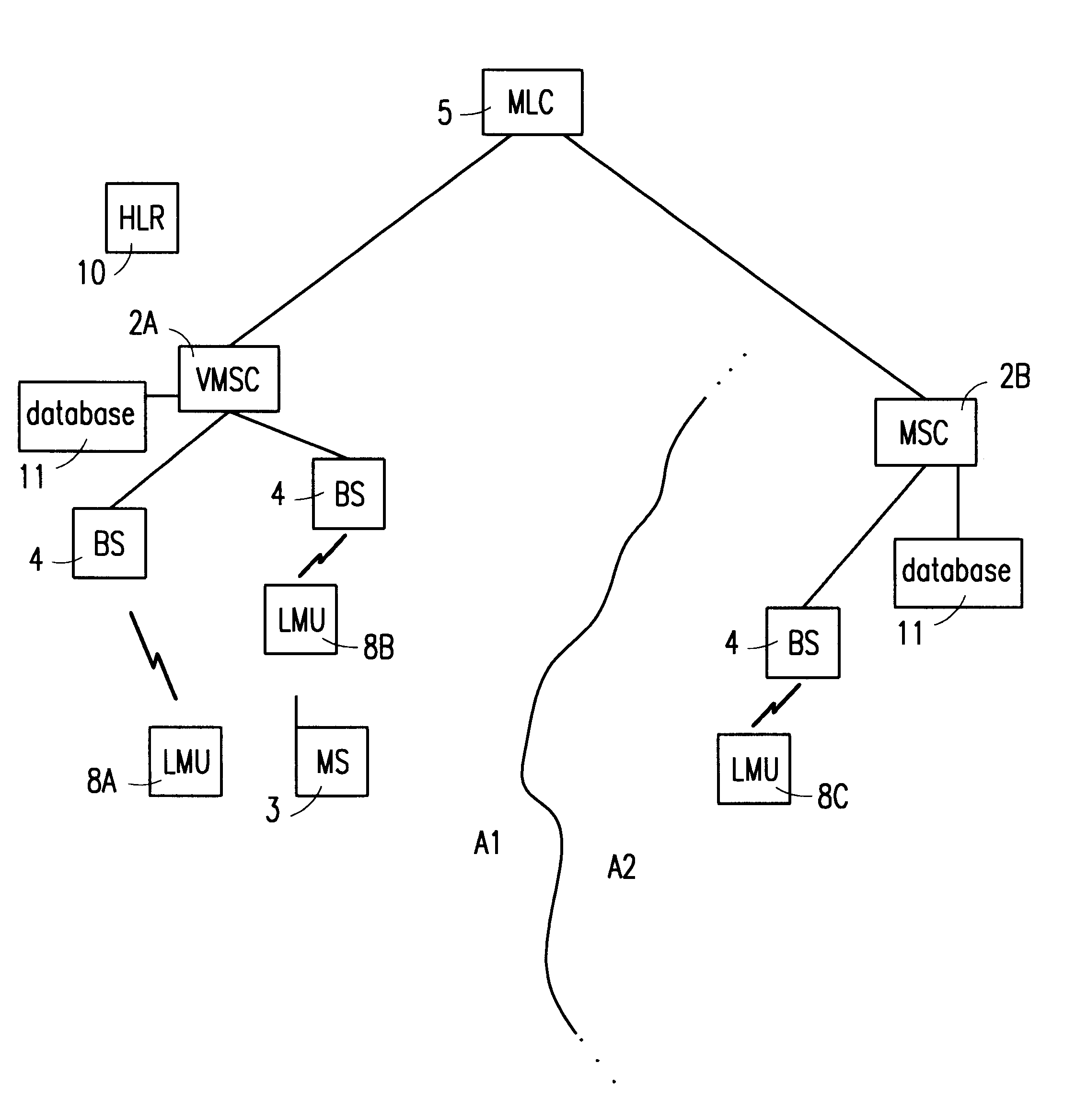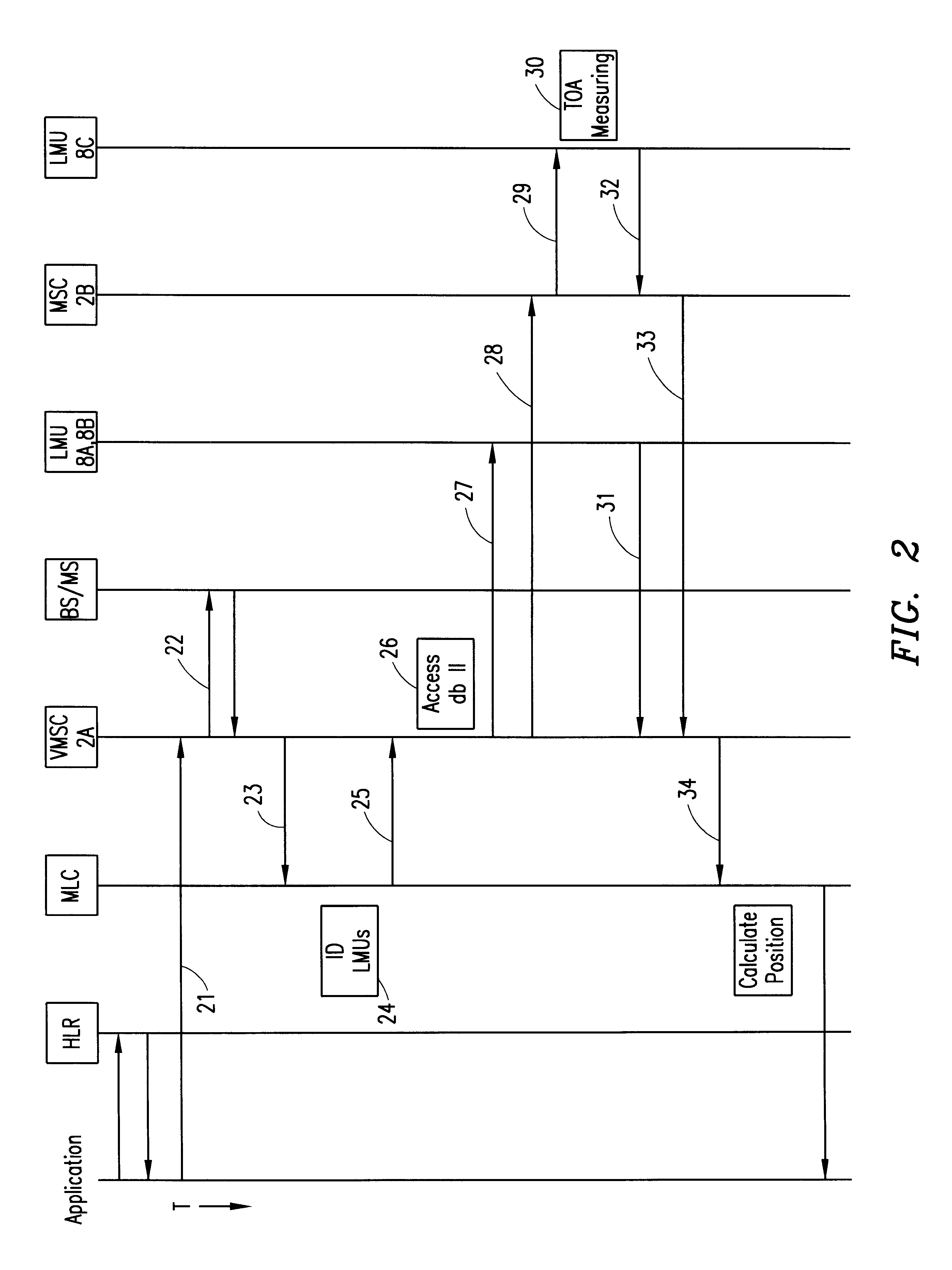System and method for mobile station position determination along border areas
a technology for mobile stations and border areas, applied in direction finders using radio waves, instruments, wireless communication, etc., can solve the problems of low accuracy of mobile station position determination, existing systems may potentially measure time delays from locations, and inability to accurately determine the position of mobile stations in such scenarios. , to achieve the effect of very accurate determination of mobile station position
- Summary
- Abstract
- Description
- Claims
- Application Information
AI Technical Summary
Benefits of technology
Problems solved by technology
Method used
Image
Examples
Embodiment Construction
The present invention will now be described more fully hereinafter with reference to the accompanying drawings in which a preferred embodiment of the invention is shown. This invention may, however, be embodied in many different forms and should not be construed as being limited to the embodiment set forth herein. Rather, the embodiment is provided so that this disclosure will be thorough and complete, and will fully convey the scope of the invention to those skilled in the art.
Referring to FIG. 1, there is shown a mobile cellular telecommunications system 1 according to the present invention. Telecommunications network 1 preferably includes a plurality of mobile switching centers (MSCs) 2 which provide call set-up, routing, control and termination operations to one or more mobile stations 3. Each MSC 2 is preferably associated with one or more base stations 4 so as to serve a specific geographical area within the telecommunications network. The communicative relationship between a ...
PUM
 Login to View More
Login to View More Abstract
Description
Claims
Application Information
 Login to View More
Login to View More - R&D
- Intellectual Property
- Life Sciences
- Materials
- Tech Scout
- Unparalleled Data Quality
- Higher Quality Content
- 60% Fewer Hallucinations
Browse by: Latest US Patents, China's latest patents, Technical Efficacy Thesaurus, Application Domain, Technology Topic, Popular Technical Reports.
© 2025 PatSnap. All rights reserved.Legal|Privacy policy|Modern Slavery Act Transparency Statement|Sitemap|About US| Contact US: help@patsnap.com



